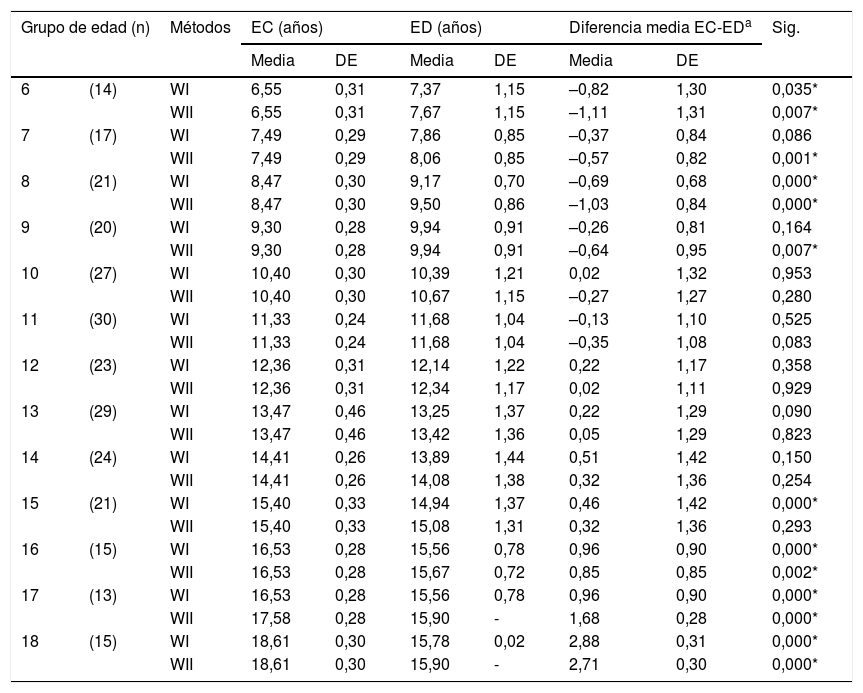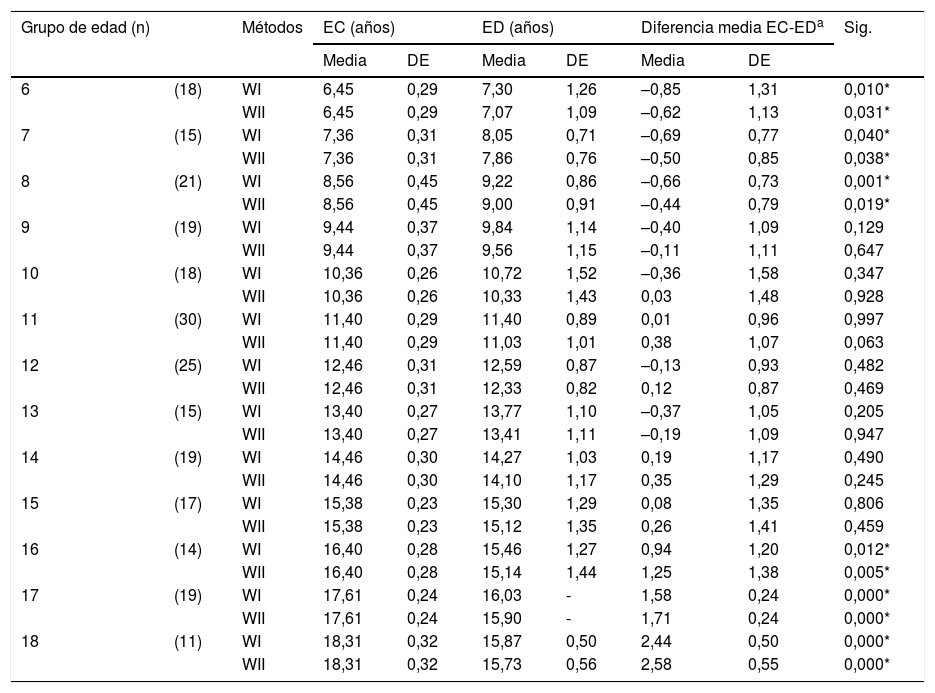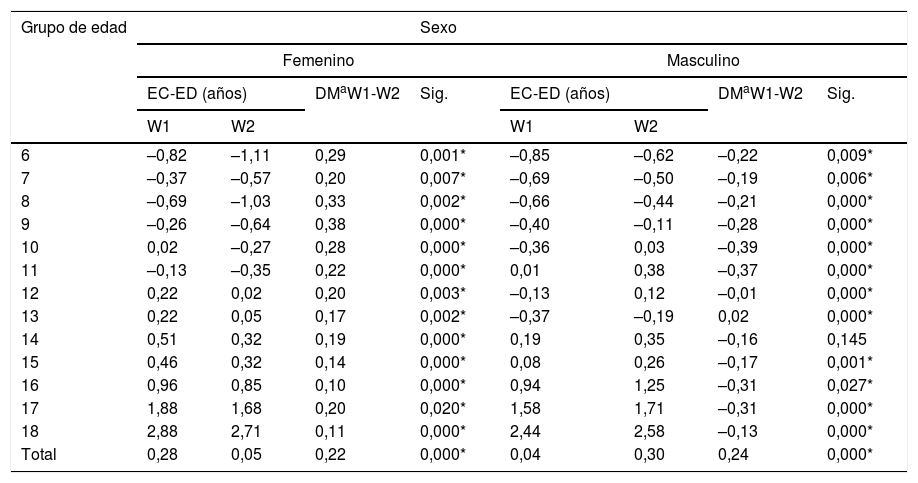El presente trabajo tuvo como objetivo comparar los métodos de Willems et al. (WI y WII) en la estimación forense de la edad en niños venezolanos.
Material y métodosEsta investigación fue de tipo retrospectiva y observacional. Se emplearon 516 ortopantomografías de individuos de ambos sexos (6-18 años), se asignaron los estadios de maduración dental descritos por Demirjian et al. en los 7 dientes inferiores izquierdos, para luego determinar la edad dental (ED) mediante WI y WII. Se calculó la diferencia de media entre la edad cronológica (EC) y la ED estimada mediante una prueba «t» de Student para muestras relacionadas.
ResultadosPara el total de la muestra se observó la subestimación de la edad por ambos métodos (0,17±1,75 años), siendo la diferencia EC-ED estadísticamente significativa (p=0,04). Considerando todos los grupos de edad, WII mostró la menor diferencia EC-ED (0,05 años±1,40) en el sexo femenino, mientras que para el masculino se encontró menor diferencia para WI (0,04±0,54 años). En una submuestra hasta los 16 años se evidenció una subestimación de la edad en el sexo femenino para WI (0,03±1,23 años) y una sobreestimación para WII (–0,18±1,24 años), en el sexo masculino ambos métodos sobreestimaron la edad (W1=–0,21±1,17; WII=–0,06±1,20 años).
ConclusionesLa precisión de los métodos varió de acuerdo al sexo y grupo de edad, sin embargo, ambos resultaron aplicables a la muestra estudiada.
The purpose of this study was to compare the methods of Willems et al., (WI and WII) in estimating the forensic age in Venezuelan children.
Material and methodsA retrospective and observational study was performed on 516 orthopantomographs of individuals of both genders (6-18 years) in order to evaluate the stages of dental maturation described by Demirjian et al. Using the dental age (DA) in the seven left inferior teeth, DA was calculated using the WI and WII methods. The mean difference between the chronological age (CA) and DA was calculated using a paired-sample t-Test.
ResultsThe under-estimation of age by both methods (0.17±1.75 years) was observed, with the CA-DA difference being statistically significant (P=.04). Considering all age groups, WII showed the smallest difference between CA-DA (0.05±1.40 years) in girls, while a smaller difference was found for WI (0.04±0.54 years)for boys. In a subsample up to the age of 16, there was an under-estimation of age in females for WI (0.03±1.23 years) and an over-estimation for WII (–0.18±1.24 years). In the males both methods over-estimated the age (W1=–0.21±1.17 years, WII=–0.06±1.20 years).
ConclusionsThe accuracy of the methods varied according to gender and age group: however, both were applicable to the studied sample.










